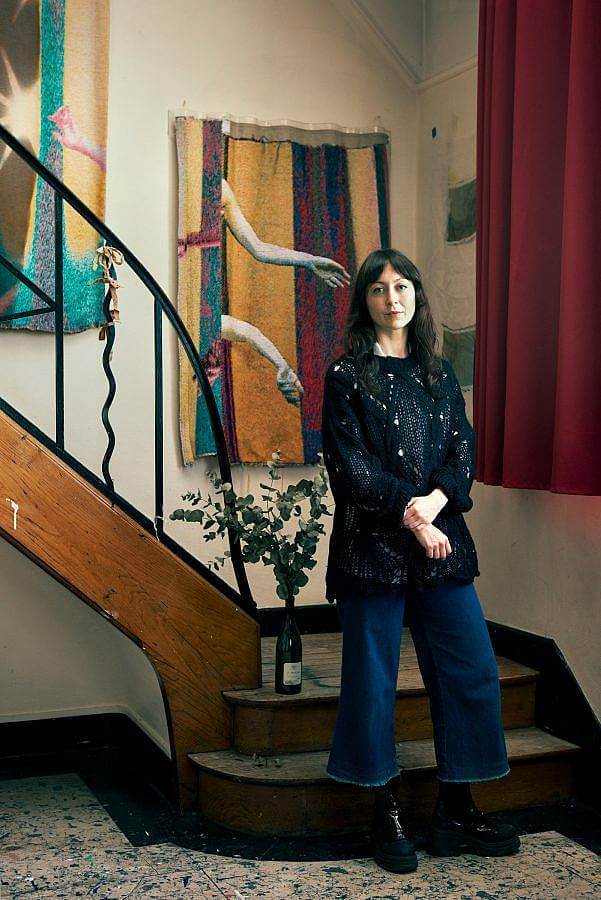Tell us a little bit about yourself and what you do.
I’m an artist, weaver, and teacher. I’m also a Chicago-lover, library-adorer, and constant project-haver.
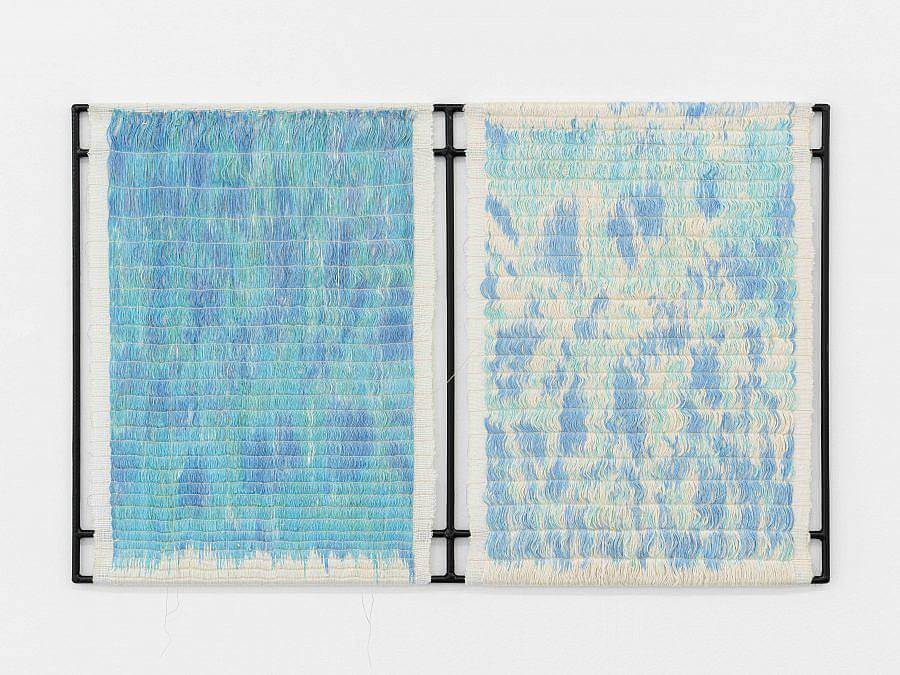
Could you describe your practice as well as a bit of your process?
I make textile-based work that engages with narrative, abstraction, and identity. I also pull lots of other types of making into my textile practice, like drawing, printmaking, and sculpture. My work resolves into lots of different things, like tapestry, painting, objects, etc.
How did your interest in art begin and how did you get to where you are focused in now?
I grew up in a small city in a rural area of Wisconsin. As a kid I always wanted to be an artist, and I was lucky that my parents were always supportive of me and I was really strong willed! I didn’t really know any artists growing up, and didn’t have an artistic community until I went to school at SAIC. I was a painter but took a class in the Fiber department, and have continued working with textiles since.
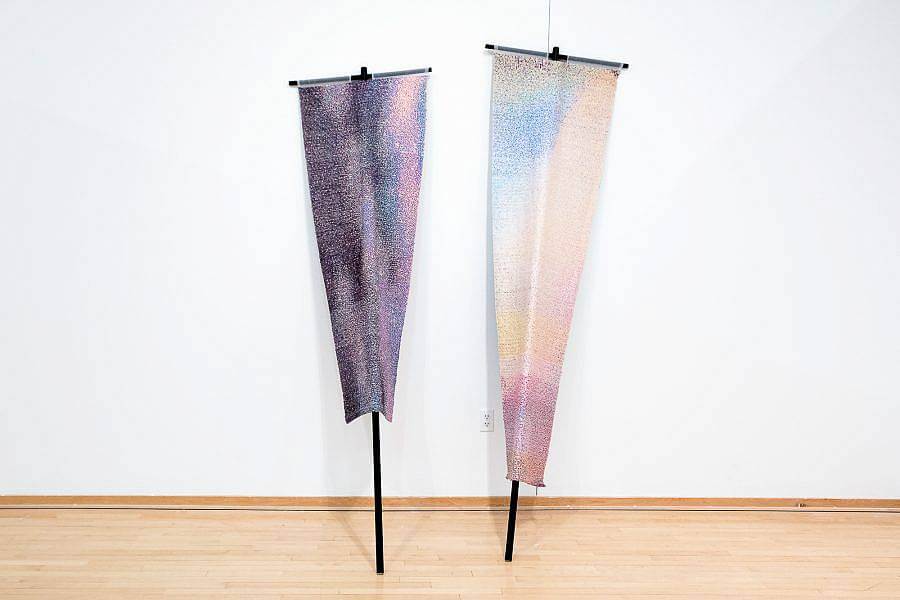
Words, language, and narrative seem to be an integral part of your practice and are often incorporated into your weavings. What is the significance of turning word to object, something one can touch and feel?
I think we weavers love to talk about the shared etymological root of text and textile, from Latin – texere. Beyond that, textiles have long been a medium for sharing stories, cultural histories, and forms of narrative. I think that remains true today, thinking of relatively recent cultural examples like the AIDS Memorial Quilt. I also spent five years working at the Ryerson and Burnham Library and Archives at the AIC and Chicago Public Library between undergrad and graduate school, and being around so many textual sources made it impossible to not integrate a more narrative or language-based way of working into my work.

Describe your current studio or workspace. (Please provide a photo of it if you have one)
I’m in Paris right now, packing up and getting ready to move out of my studio at the Fondation des États-Unis. It’s about 30 square meters, with a big north-facing window that goes up into the ceiling, so it always gets lots of light, especially in the summer when the sun is up in Paris from 5:30am to 10pm. I have a little loom and some long work tables.
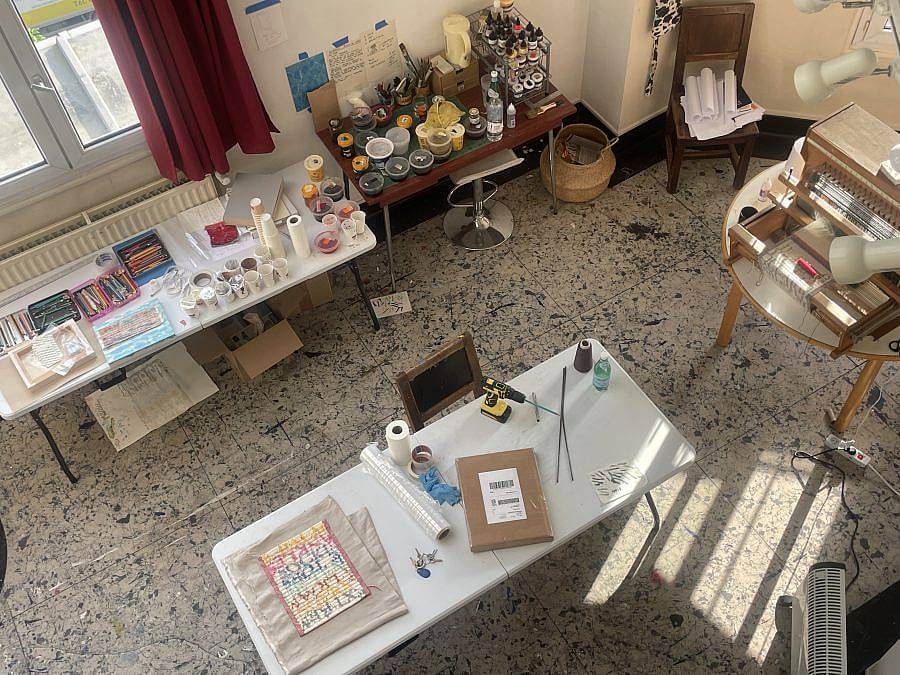
Your recent body of work/research while at Fondation des États-Unis has been focused on queer history of artists and writers in France across a multitude of periods. Can you talk about your experience with researching this and how this has played into your practice?
Last year I was a visiting artist at the École des Arts Décoratifs and a Fulbright Harriet-Hale Wooley Fellow. For my Fulbright, I wanted to research and make work about a really incredible group of queer artists and writers working in Paris during the 1920s and 1930s (Natalie Barney and Claude Cahun, for example). During my research, I was drawn to the fact that many of these artists were frequently looking to and referencing Sappho, the Greek poet of antiquity. I was moved by the sort of reflexive nature of our mutual search for our communities of the past – I was looking for these artists/writers from a century ago, and they were looking for her. So I ended up making a show that at its root was about this searching and desire for another (place,community, ideal), manifested as a series of large “curtain” tapestries.
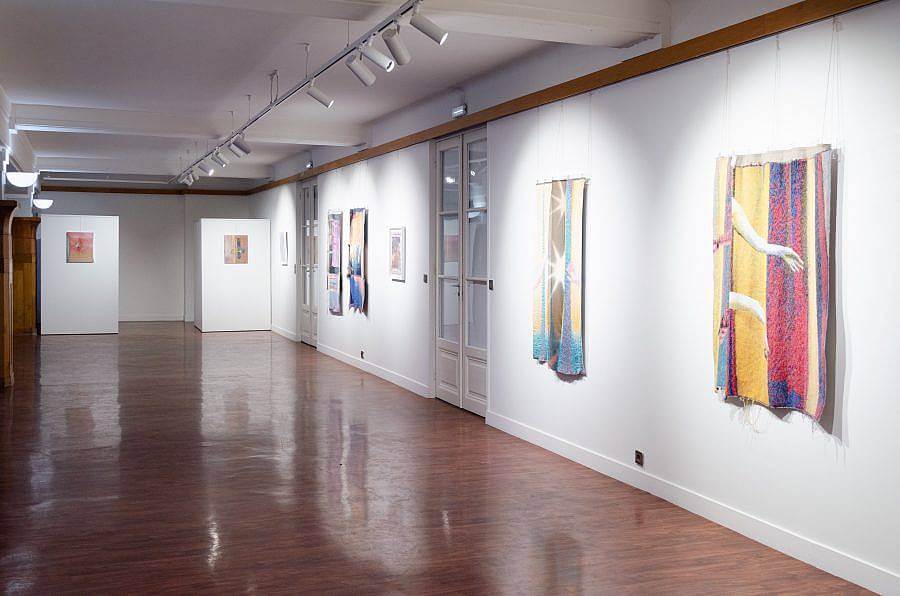
What is the significance (if any) of the act of flattening when it comes to weaving? Specifically when working with bodily or more object forward imagery?
For me, weaving has always felt like a slow form of collage – I think your reference to the flattening is exactly that – the amassing and assembling of various things – of images, ideas, words, that, in putting them all into one single cloth or one single object, become stretched and repositioned into a single new thing. It’s a flatness that I think can also be quite voluminous and dimensional upon closer inspection! Formally the question of flatness in textiles is interesting to me too, and I’m always trying to understand how I can play between the flat and dimensional form.
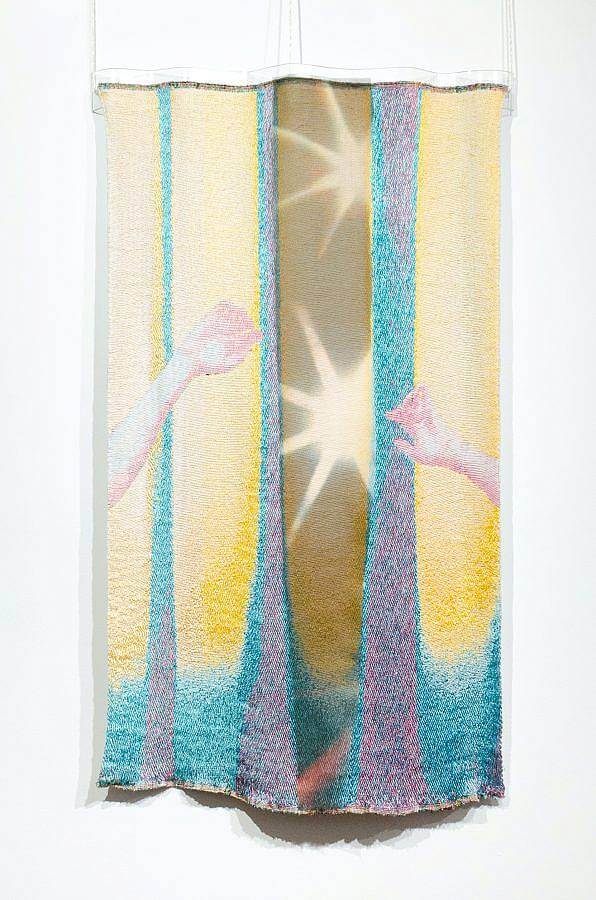
You have been living and working between Paris and Chicago. How has that experience been for you? How would you say the scenes differ?
I love both places! I think Chicago will always be my favorite art scene – I love the community here and love how interconnected it is. I always feel at home in Chicago and I’m always excited to see what people are making and showing. Intra-muros Paris has about the same population size as Chicago, but has a huge cultural sector and a vast number of museums and galleries. I feel like I never get to see everything that’s happening here, but it’s great to be able to run out and see a show just about whenever. I have also been able to work at an amazing art school in Paris, the École national supérieure des Arts Décoratifs, and my students here have blown me away with their talent and effort.
What are some recent, upcoming or current projects you are working on?
I had two shows in Paris this summer that recently closed. In June I had a second solo show at the Fondation des États-Unis, “Murmur,” which was a group of abstract and text-based works. In July I was part of a group show of textile artists at Galerie Chloé Salgado (that I also assembled with the artist Maria Szakats) called July Fourth (the show opened July 4th). We were lucky to have another Chicagoan, Jenny Harris, write us a great text for that show too.
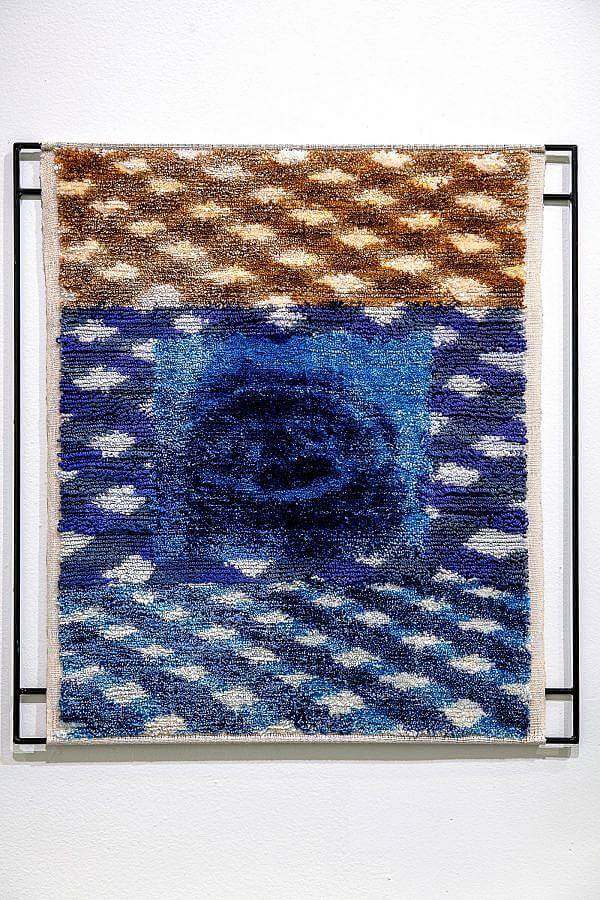
What do you want a viewer to walk away with after seeing your work?
I make work because I like being in artistic communities, and so what I value is the exchange that happens in making alongside people, process, and talking and thinking about art together. People can take away what they want! That part is less important to me.
Do you have any daily rituals?
I like to take a long walk every day – you can walk about halfway across Paris in an hour.
What do you collect?
Absolutely nothing at the moment – my accumulation of possessions is by necessity at the bare minimum! I have a few beautiful rugs in storage from various places, and I dream of eventually having a home covered in a very fine collection of rugs.
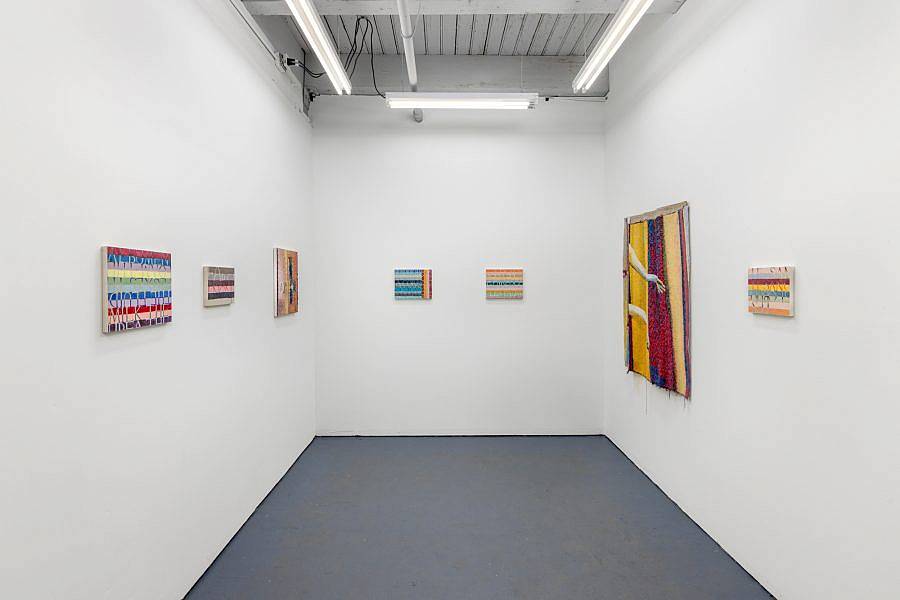
What have you been listening to/reading lately?
I’m currently reading Saké Blue by Estelle Hoy and a little collection of Agnes Martin’s writing.
What are you really excited about right now?
In the next month, I’m excited for summer-time Chicago, for heading to Pennsylvania for a new project in the fall, and toward meeting a dear friend’s new baby for the first time !
Interview conducted and edited by Lily Szymanski.
